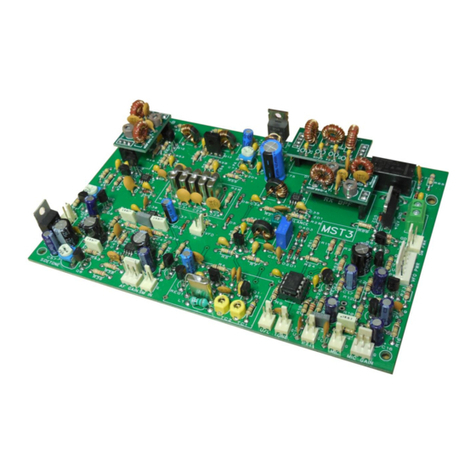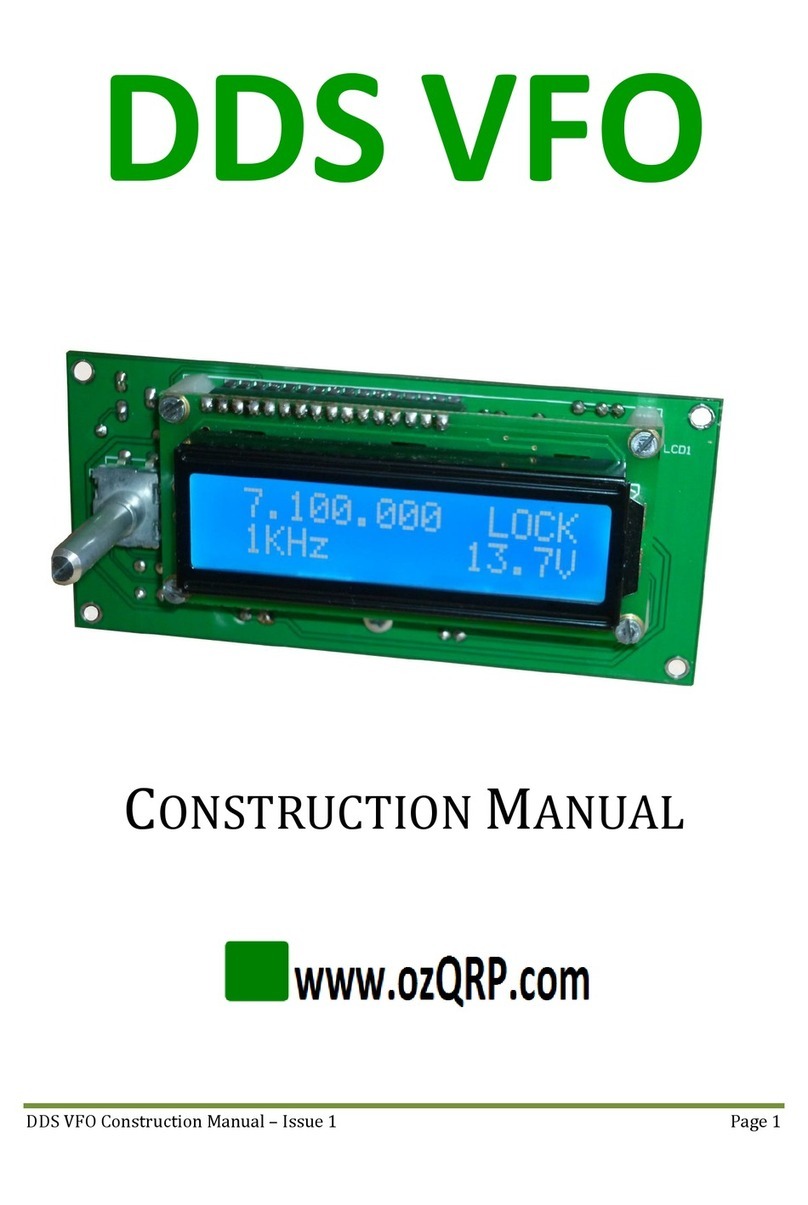
MDT Construction Manual –Issue 2 Page 2
CONTENTS
1Introduction..............................................................................................................................................................4
2DSB vs SSB .................................................................................................................................................................5
3DSB transmitter.......................................................................................................................................................6
4Direct Conversion receiver................................................................................................................................. 7
5MDT Block Diagram...............................................................................................................................................8
6Circuit Description .................................................................................................................................................9
6.1 Variable Frequency Oscillator (VFO)........................................................................................................................9
6.2 Mixer .......................................................................................................................................................................................9
6.3 Microphone amplifier ................................................................................................................................................... 10
6.4 Transmit amplifier......................................................................................................................................................... 10
6.5 Power Supply and RX/TX switching ...................................................................................................................... 11
6.6 Receive audio.................................................................................................................................................................... 11
7Kit Supplied Parts ................................................................................................................................................ 17
8Individual Parts List............................................................................................................................................ 19
9Construction........................................................................................................................................................... 21
9.1 General ................................................................................................................................................................................ 21
9.2 Building the PCB.............................................................................................................................................................. 22
10 Final Assembly...................................................................................................................................................... 33
10.1 Microphone socket......................................................................................................................................................... 33
10.2 Terminating plugs .......................................................................................................................................................... 34
10.3 Front Panel ........................................................................................................................................................................ 35
10.4 Mounting the PCB........................................................................................................................................................... 35
11 Testing and alignment ....................................................................................................................................... 36
11.1 General ................................................................................................................................................................................ 36
11.2 Power on............................................................................................................................................................................. 36
11.3 Receive ................................................................................................................................................................................ 36
11.4 Transmit ............................................................................................................................................................................. 37
11.5 Marking the VFO scale.................................................................................................................................................. 38
12 Modifications......................................................................................................................................................... 40
12.1 Setting the VFO range ................................................................................................................................................... 40
12.2 Receiver alignment ........................................................................................................................................................ 40
12.3 Crystal operation ............................................................................................................................................................ 40
12.4 Using a loudspeaker ...................................................................................................................................................... 40
13 Operation................................................................................................................................................................. 41
13.1 Setting up ........................................................................................................................................................................... 41
13.2 Receiving ............................................................................................................................................................................ 41
13.2.1 SSB.......................................................................................................................................................... 41
13.2.2 CW........................................................................................................................................................... 41
13.3 Transmitting ..................................................................................................................................................................... 42






























